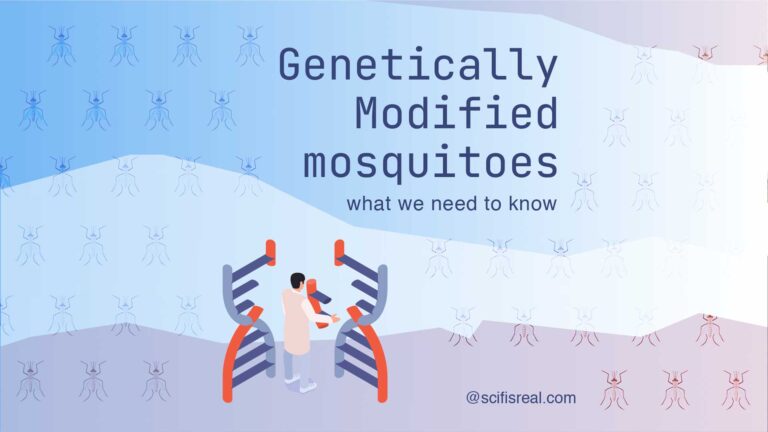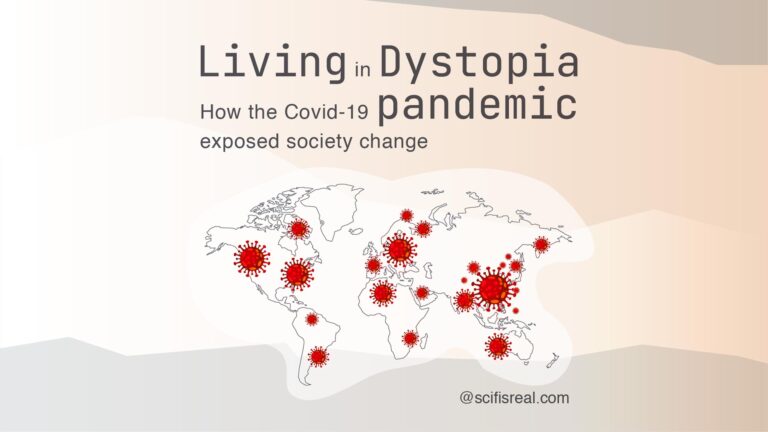Genetically modified mosquitoes: what we need to know

One controversial way to address the issue of pests, such as disease-carrying insects, is through the use of genetically modified mosquitoes. These genetically modified insects have been engineered with a gene drive, allowing a certain trait – such as pest control or sterilization – to spread quickly throughout the population.
While some argue that these GM mosquitoes could be a valuable tool in controlling disease transmission, others are concerned about the potential unintended consequences and ethical implications of releasing genetically modified organisms into the environment.
Further research and discussion are needed to determine the best approach for pest control, balancing the potential benefits with possible risks. In the meantime, traditional methods such as eliminating standing water and using insect repellent should continue to be employed.
Genetically modified insects in science fiction
Genetically modified insects in science fiction have often been portrayed as dangerous and uncontrollable, with the potential to wreak havoc on society. Examples include the mutated, flesh-eating “Rabids” in The Girl with All the Gifts (also in film) and the monstrous bugs created by a rogue genetic engineering company in Michael Crichton’s novel, Prey. However, there have also been more optimistic portrayals, such as in the television series Orphan Black, where genetically modified butterflies are used to monitor air pollution.
More examples include the genetically modified “spiders” in the Spider-Man series and the giant mosquitos in Michael Crichton’s novel, Jurassic Park, and the cult classic film, The Fly where a scientist accidentally fuses his DNA with that of a fly during a teleportation experiment.
Regardless of the specific depiction, these stories serve as cautionary tales about the potential consequences of tinkering with genetic modification and highlight the importance of carefully considering the ethical implications and possible ramifications before moving forward with such technology.
It is important to consider how these depictions in sub-genres of sci-fi may shape our perceptions and attitudes toward the use of genetic modification in real life. While it is important to consider and address the potential risks, we should also be open to the possibility of using genetic modification for beneficial purposes, such as improving crop yields or enhancing disease resistance. As with any new technology, caution and responsible decision-making are key in determining how and when it should be used.
How genetically modified mosquitoes could help control disease
One approach, known as a “lethal gene drive”, involves engineering mosquitoes to pass on a gene that would render their offspring unable to survive until adulthood. This potentially could significantly reduce the insect population and therefore lessen disease transmission.
Another approach, called the “sterile insect technique”, involves releasing genetically modified male mosquitoes that are sterile, leading to a decrease in the overall population.
Further research is needed to fully understand the potential impacts and effectiveness of these approaches, as well as to address any possible drawbacks or risks.
Should we be concerned about GM mosquitoes?
Ultimately, the decision on whether or not to use them should be informed by careful research and discussion, weighing the potential benefits against possible risks. In the meantime, traditional methods of pest control should continue to be employed. It is important to consider not only the potential impact on human health but also on the larger ecosystem. The responsible use of any new technology requires caution and continual monitoring and assessment. Ultimately, the goal should be to protect both human health and the natural environment. This is a debate that will continue as we move forward with new technologies in pest control and genetic modification.
The risks of releasing genetically modified mosquitoes in nature
The risks and rewards of genetically modified organisms are currently being debated among scientists and the general public. Proponents argue that these GM insects could be a useful tool in controlling disease transmission, particularly in regions where mosquito-borne illnesses such as malaria are prevalent.
However, there are also concerns about the potential for unexpected consequences and ethical implications of releasing thousands of genetically modified mosquitoes into the environment. There is also a fear that gene-drive technology could spread beyond the targeted insect population, potentially impacting other species and ecosystems.
Are GM mosquitoes a bad thing for the environment?
The ethical considerations of genetically modifying living organisms and releasing them into the environment are complex and controversial. Some argue that the potential benefits of controlling disease outweigh any possible negative consequences, while others believe that the risks and uncertainties are too great.
There is currently a lack of consensus among scientists and the general public on the potential impacts of releasing genetically modified organisms into the environment. Some argue that these GM insects could be a valuable tool in controlling disease transmission, while others are concerned about the potential for unintended consequences and ethical implications.
Further research and discussion are needed to determine the best approach for pest control, balancing the potential benefits with possible risks. In the meantime, traditional methods such as eliminating standing water and using insect repellent should continue to be employed.
The debate about using genetic modification for pest control and its potential impact on the ecosystem is ongoing and complex. It is important to consider both the potential benefits and possible risks before making a decision on whether or not to use genetically modified mosquitoes.
Ultimately, the ultimate goal should be to protect human health while also preserving and protecting the natural environment. As with any new technology, caution and careful consideration must be exercised, and continual monitoring and assessment are necessary.
What genetically modified mosquito experiments are being carried out right now?
Currently, experiments using genetically modified mosquitoes for the control of diseases such as dengue and Zika are being conducted. One approach involves engineering mosquitoes to pass on a gene that would render their offspring unable to survive until adulthood, potentially significantly reducing the insect population and therefore disease transmission. Another approach involves releasing sterile male mosquitoes, leading to a decrease in the overall population. Looking at the successes and failures of past GM mosquito experiments in countries like Brazil and the Cayman Islands can inform future efforts and decision-making.
It is important to note that there are also ongoing debates and controversies surrounding the ethical implications and potential unintended consequences of releasing genetically modified organisms into the wild.
Looking at the successes and failures of past GM mosquito experiments in countries like Brazil and the Cayman Islands can inform future efforts and decision-making. It is important to note, however, that there are ongoing debates and controversies surrounding the ethical implications and potential unintended consequences of releasing genetically modified organisms into the wild. Continued research and discussion are necessary to determine the most effective and responsible approach to pest control.
Considering the ethical implications of releasing a modified organism into the wild and the potential unintended consequences. And examining alternative solutions for disease control, such as improved access to vaccines and better sanitation infrastructure. These are all important aspects to consider in the ongoing debate about using genetically modified mosquitoes for pest control.
2) Another approach that is being explored is using gene editing techniques to introduce a self-limiting gene into mosquito populations. This would cause any offspring produced by those mosquitoes to die before reaching adulthood, thereby reducing the overall population without introducing foreign genes into the ecosystem. This approach is currently being tested in parts of Brazil and could potentially be a viable alternative to releasing genetically modified mosquitoes.
3) As with any new technology, there will always be uncertainty and potential risks. It is important to carefully consider all possible implications and continually monitor and assess its effects, both on human health and the larger ecosystem. Ultimately, the goal should be to protect both while also finding effective solutions for disease control. That being said, further research and discussion are necessary to determine the best approach moving forward. Traditional methods of pest control should continue to be employed in the meantime.
4) The decision to use genetically modified mosquitoes for pest control should not be taken lightly. It is important to thoroughly assess the potential benefits and possible risks, considering not only the impact on human health but also on the larger ecosystem. And continual monitoring and assessment should be conducted to ensure responsible use of this technology. Ultimately, the goal should be to protect both human health and the natural environment while also finding effective solutions for disease control. Traditional methods of pest control should continue to be employed in the meantime, as further research and discussion are necessary to determine the best approach moving forward.
How can we avoid resorting to genetic insect modification?
- Exploring potential alternatives to using genetically modified mosquitoes for pest control, such as more sustainable methods of managing the insect population.
- Continuing to educate the public on the importance of traditional preventative measures, such as eliminating standing water and using insect repellent.
- Working towards finding a balance between controlling disease transmission and preserving and protecting the natural environment.
- Engaging in discussions and debates about the ethics of using genetic modification in pest control and other industries.
- Continually monitoring and assessing the impact of releasing genetically modified organisms into the environment.
- Considering the input and concerns of all stakeholders, including scientists, policymakers, and members of the general public.
- Working towards a solution that prioritizes both human health and the preservation of the natural world.
- Staying open to new information and adapting our approach as we learn more about the potential impacts of genetic modification on the ecosystem.
Conclusion
There are several steps that can be taken to avoid resorting to genetic insect modification, such as exploring alternative solutions and continually assessing the impacts of this technology. It is important to consider the input and concerns of all stakeholders and prioritize both human health and the preservation of the natural environment in finding a solution. Ultimately, an open-minded and adaptable approach is necessary as we continue to learn more about the potential consequences of genetic modification.







